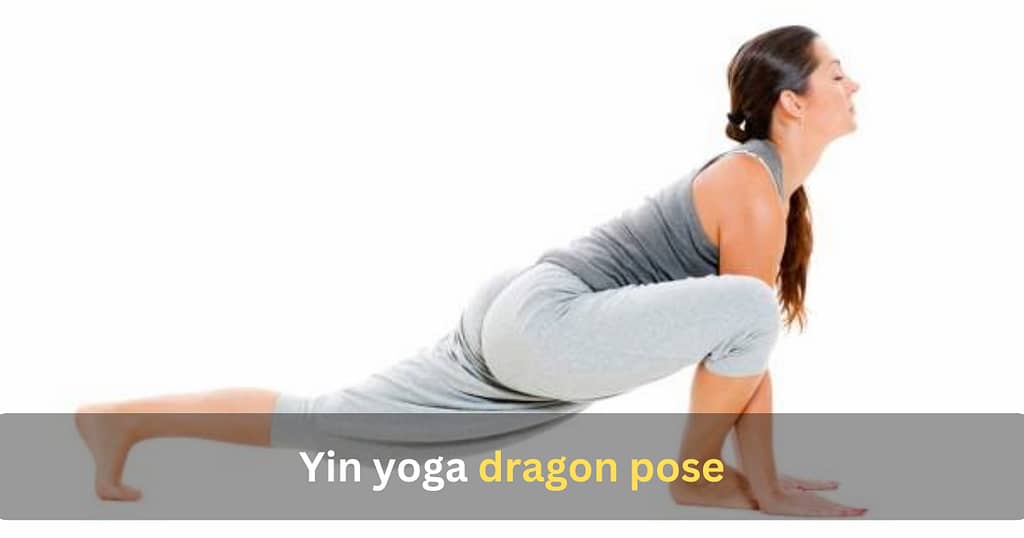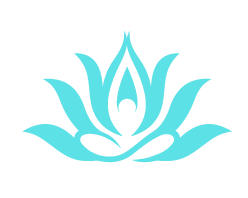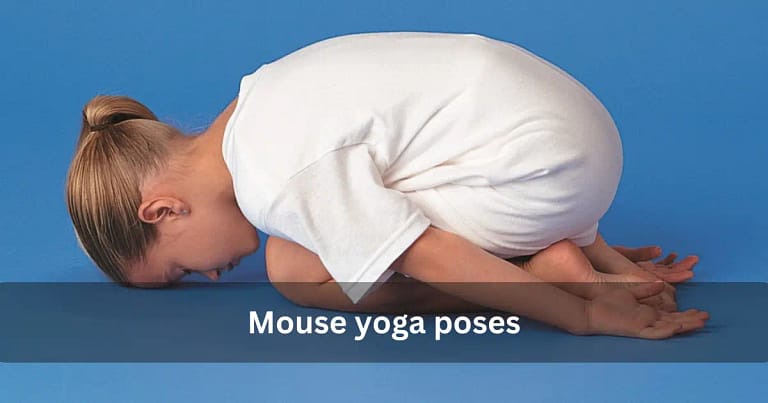Yin yoga dragon pose: how to do step by step in 2023

Yin yoga dragon pose
A common position in Yin Yoga sessions that can assist with opening up the front part of your hips, relieve tension in your lower back, and give your thighs a deep stretch is the dragon pose, also known as the lizard stance in Sanskrit.
The Sanskrit name for Dragon Pose is Utthan Pristhasana, whereas the English word is Lizard Pose. The stretch posture, a forward bend, is done in the prone position.
The Dragon Pose is one of the most potent positions in the Yin Yoga style, known for its emphasis on holding poses for long periods. The Dragon Pose can improve flexibility and range of motion and encourage awareness and relaxation.
Whether you’re an experienced yogi or brand-new to the discipline, this article will offer insightful advice and motivation for your journey into the Dragon Yoga Pose. So, let’s examine this powerful Yin’s specifics and advantages.
A Few Pointers to Keep in Mind Before Doing Yin Yoga

- Stretching beyond your range of motion is not the aim of yin yoga. Finding the correct ratio of effort to ease is crucial for yoga practitioners. Pay close attention to your body’s indications.
- Use yoga props to support your body as you practice without feeling guilty about it. Braces are essential to help the body soften, ease into Yin Yoga positions, and relax into the stillness that comes with them. You should have two yoga blocks, or one to two yoga blankets are recommended as support.
- Back out of the postures if you already tend to flexibility and focus instead on fortifying your connective tissue.
- As your body’s connective tissues adjust and stretch, the benefits of a Yin Yoga practice might endure for many days. Take careful note of how you feel immediately following your exercise and in the following days.
- Additionally, constantly keep in mind to properly hydrate yourself and feed your body. Yin yoga provides for a thorough release of toxins and holding patterns in the body, much like a massage does.
Read:
Can We Do Yoga And Gym Together? – How Can You Schedule On Same Day 2023
How to practice step by step

- Step your right foot between your hands while standing on all fours with your right knee directly above the heel.
- Slide the left leg back until you feel an excellent stretch in the left hip and thigh, then bring the left knee to the floor.
- Ensure your weight is distributed slightly (towards the bottom of the leg) beyond the kneecap rather than on top. Put your front foot firmly on the ground.
- Keep the hands on blocks if necessary or on each side of the front foot.
- Pose-holding for three to five minutes.
- To exit the position, step out with your right foot while stepping your back knee forward and tucking your toes.
Releasing the Pose
Put your hands in the Down Dog position, step your back leg slightly forward, tuck your back toes under, and then step back to Down Dog with a satisfying sigh.
Reverse poses
A quick down dog is tasty. Lifting one heel while pressing the opposing heel downward, flex one knee, then alternate sides frequently. Child’s Pose is incredibly relaxing after Down Dog and before moving to the other side of the Dragon.
What are the benefits of the Winged Dragon pose?

- Deep pelvic and hip opener that reaches the connective tissue directly.
- Stretches the quadriceps and hip flexors in the rear leg.
- There are several versions to assist in reaching the hip socket deeply.
- It can ease lower back pain and sciatica.
Read:
Is Yoga Considered A Type Of Hindu Ritual? – Separating Myth From Reality 2023
What are the variations of the Yin Dragon pose?

- Put your hands on your upper thighs and elevate your chest to the dragon’s position. This will put more weight on your hips and cause a slight backbend.
- Walk forward with your hands inside your front foot while putting your elbows on the floor or some blocks.
- Rotate your chest upwards toward the bent knee while firmly flexing your front foot and gently pressing your front knee out with your palm.
- Roll on the outside edge of your front foot while firmly flexing your front foot and opening your knee to the side. Move your hands forward and place your elbows on the mat or blocks if necessary.
- When you step over a dragon, let your front knee advance until the heel is about to lift off. Keep most of your weight on each side of the front foot in your hands. This variety nicely stimulates the Achilles tendon.
- Walk your rear leg further down the mat in the dragon split to bring both legs closer to being straight. Under the front hip, place some blocks or a bolster for support. To experience distinct sensations, keep your body up or fold your front leg over.
- Put your foot’s arch against the wall and one knee on a cushion. With the opposite foot, advance while letting your hips drop. To support, place a block beneath the thigh.
Particular cautions
- The kneecap or ankle may feel unpleasant. The rear thigh will be at a 90-degree angle to the front thigh if you are stiff, putting a lot of pressure on the kneecap.
- Put a folded blanket beneath the back knee for support, or lay a bolster under the shin to lift the back knee off the floor.
- If you have tight hip flexors or hip problems, proceed with caution.
- If your students feel any of the symptoms above, you should be cautious when leading this posture.
Usability Alternatives for Yoga Props
Place a blanket over the back knee, support the shin on a bolster, or elevate the leg off the floor with the toes tucked under.
Put a blanket under the ankle if it hurts, or lift the knee by placing a bolster under the shin. Firmly press down on the top of the foot, focusing on the little toe.
DIY yoga props are simple to find around your home, so don’t hurry out to the shop.
Beginner’s Advice
Since the feelings in this posture can get powerful, start by holding for 1 to 3 minutes.
You can relax even more profoundly if you support yourself by placing a block vertically under your front leg or hip. In case your back knee hurts, put a blanket there.
Read:
How Long Does It Take To Become Good At Yoga? – Mastering The Art Of Yoga In 2023
Wrap up
Yin yoga movements known as “dragon poses” assist in targeting the hip flexors and quadriceps while also helping to expand the hips and groin area deeply. The hip joints are an example of a ball-and-socket synovial joint.
The femur rests firmly in the socket and is made for weight bearing, while the hip joints are for stability. Due to this rigidity, the mobility and flexibility of the tissues around the hip joint are only sometimes assured.
FAQs: Yin yoga dragon pose
Q: What is the most relaxing Pose in yoga?
Cow pose, child pose, cat pose.
Q: What kind of yoga relieves stress the best?
Vinyasa is a technique that emphasizes mobility and has fluid posture transitions; the word “flow” comes from Sanskrit. people who are facing stress or experiencing anxiety may benefit from a slow vinyasa practice to help them concentrate their minds and find calm through movement.
Q: What variations of dragon stances are there?
Diverse Dragon Poses. As previously mentioned, eight distinct forms of the dragon position exist the baby dragon, the dragon flying high, the dragon flying low, the twisted dragon, the winged dragon, the overstepping dragon, the dragon splits, and the fire-breathing dragon.
video guide
read also
- Spider Pose Yoga (Utkata Konasana): How To Do And Benefits In 2023
- Cobra Vs. Upward Dog: Benefits And Precautions In 2023
- Swan Pose Vs. Pigeon Pose – Benefits And Cautions In 2023
- Can Beginners Do Ashtanga Yoga? Complete Guide In 2023
- What Is Special About Ashtanga Yoga? – 14 Benefits Of Ashtanga Yoga
- Meditation And Cool Breeze (Vibrations) – Complete Guide In 2023





